Discover the top 10 famous dances from around the world, showcasing iconic styles and cultural influences. Explore the best dance forms, from ballet to hip-hop, and their global impact.
10. Flamenco:
- Origin: Andalusia, Spain
- Key Characteristics: A passionate and expressive dance form with roots in Spanish Romani culture.
- Notable Features:
- Characterized by rapid footwork, intricate hand gestures, and emotional intensity.
- Often accompanied by live guitar music, singing, and hand clapping.
- A vibrant and dynamic form of dance that showcases Spanish culture and tradition.
Flamenco: A Passionate Dance of Andalusia
Flamenco, a vibrant and expressive art form, is deeply rooted in the cultural tapestry of Andalusia, a region in southern Spain. This passionate dance is a captivating blend of music, dance, and song, reflecting the rich history and diverse influences that have shaped the region.
Origins and Influences:
While the exact origins of flamenco remain shrouded in mystery, it is believed to have emerged from a confluence of various cultural influences:
- Romani (Gypsy) Culture: The Roma people, who migrated to Spain from India centuries ago, brought with them their own unique musical and dance traditions, significantly influencing the development of flamenco.
- Andalusian Culture: The region of Andalusia, with its diverse history, has been shaped by Arab, Jewish, and Christian cultures. These influences are reflected in the music, dance, and overall aesthetic of flamenco.
- Folk Traditions: Flamenco draws upon various folk music and dance traditions of Andalusia, including fandangos, seguidillas, and bulerías.
Key Elements of Flamenco:
- Cante (Song): Flamenco music is characterized by soulful vocals, often accompanied by heartfelt lyrics that express joy, sorrow, love, and loss.
- Toque (Guitar): The flamenco guitar plays a crucial role, providing rhythmic accompaniment and melodic embellishments.
- Baile (Dance): Flamenco dance is a powerful and expressive art form, characterized by intricate footwork, graceful arm movements, and dramatic gestures.
- Jaleo (Audience Participation): Flamenco performances often involve audience participation, with shouts of “olé!” expressing appreciation and excitement.
Styles of Flamenco:
- Soleá: Considered the most fundamental form of flamenco, known for its deep emotion and soulful expression.
- Bulerías: A lively and upbeat style with a fast tempo and intricate footwork.
- Seguiriyas: A more somber and melancholic style, often reflecting themes of love, loss, and social injustice.
- Rumba: A lively and rhythmic style with African influences.
- Alegrías: A joyful and upbeat style, often associated with celebrations and festivals.
Key Characteristics of Flamenco Dance:
- Jondo: The soul of flamenco, emphasizing deep emotion and expressive movement.
- Duende: A mystical quality that transcends technique, conveying raw emotion and artistic passion.
- Zapateo: The intricate footwork that forms the foundation of flamenco dance, creating a rhythmic and percussive effect.
- Brazo: The graceful and expressive arm movements that enhance the overall aesthetic of the dance.
- Marcaje: The stamping of the feet, creating a rhythmic and percussive sound.
Flamenco Today:
Flamenco continues to evolve as an art form, with contemporary artists pushing the boundaries of tradition while honoring its roots. It has gained international recognition, with flamenco festivals and performances held worldwide.
Conclusion:
Flamenco is a captivating art form that embodies the passion, emotion, and cultural richness of Andalusia. Its intricate music, expressive dance, and deep-rooted history make it a truly unique and unforgettable experience.
Read Also- Top 10 Best Musical Instrument…. Click here
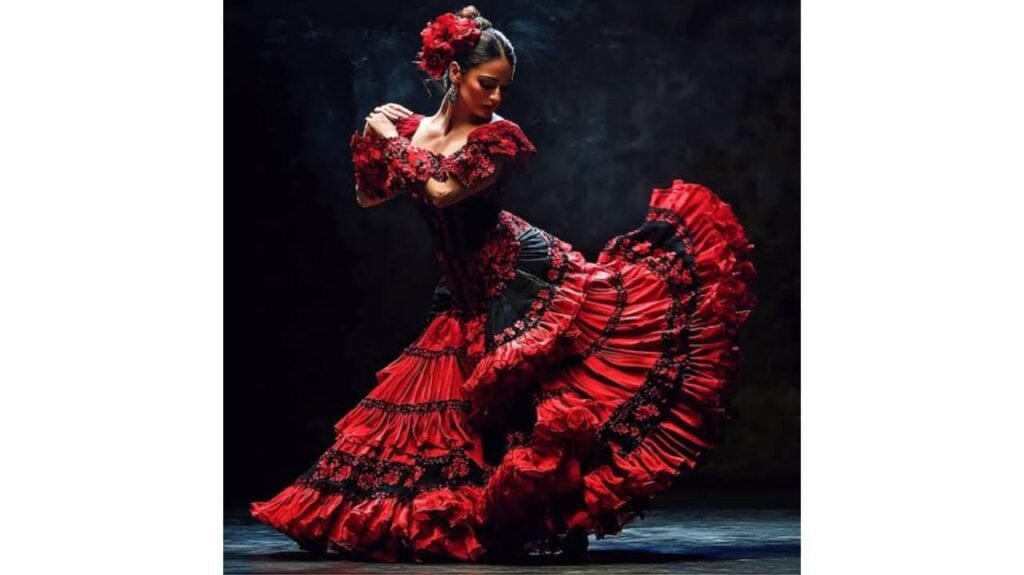
9. Kathak:
- Origin: North India
- Key Characteristics: Another major classical Indian dance form, known for its fast-paced footwork, spins, and intricate hand movements.
- Notable Features:
- Emphasizes storytelling and narrative through dance.
- Often incorporates elements of Hindustani classical music.
- Known for its graceful and expressive movements.
Kathak: A Journey Through Rhythmic Storytelling
Kathak, one of the major classical dance forms of India, is a captivating blend of grace, rhythm, and storytelling. Originating in North India, this intricate art form has evolved over centuries, absorbing influences from various cultures while retaining its unique identity.
A Tapestry of Origins:
The word “Kathak” itself is derived from the Sanskrit word “Katha,” meaning “story.” Traditionally, Kathak dancers were traveling bards who narrated stories, often from Hindu epics and mythology, through dance, music, and song. This storytelling tradition forms the core of Kathak’s essence.
Key Characteristics:
- Intricate Footwork: Kathak is renowned for its mesmerizing footwork, characterized by rapid rhythmic patterns, intricate spins, and intricate leg movements. The dancer’s feet, adorned with small bells (ghungroos), create a rhythmic symphony that accompanies the music.
- Graceful Movements: Despite the dynamic footwork, Kathak emphasizes grace and fluidity of movement. The dancers’ bodies move with a sense of effortless ease, creating a visual spectacle of controlled energy.
- Expressive Hand Gestures: Hand gestures (mudras) play a crucial role in conveying emotions and narratives. Each mudra has a specific meaning, allowing the dancer to communicate complex ideas and stories through subtle movements.
- Emphasis on Rhythm: Rhythm is the lifeblood of Kathak. The dancers meticulously synchronize their movements with the intricate rhythms of the accompanying music, often played on instruments like the tabla and sitar.
- Storytelling: Kathak is inherently a storytelling art form. Dancers narrate stories through their movements, facial expressions, and gestures, bringing to life mythological figures, historical events, and emotional states.
Evolution of Kathak:
- Early Influences: Early forms of Kathak were influenced by temple dance traditions and the nomadic lifestyle of wandering bards.
- Courtly Traditions: During the Mughal period, Kathak flourished in the courts of North India, where it absorbed influences from Persian and Central Asian dance forms.
- Modern Era: In the 20th century, Kathak underwent a period of revival and innovation. Renowned dancers and choreographers like Pandit Birju Maharaj and Sitara Devi played a pivotal role in preserving and evolving the art form.
Key Elements of a Kathak Performance:
- Tala: The rhythmic cycle that governs the dance.
- Layakari: The intricate footwork patterns.
- Tumar: A series of rhythmic patterns performed by the dancer.
- Chakkars: Rapid spins, a signature feature of Kathak.
- Abhinaya: The art of expressive movement, including facial expressions, hand gestures, and body language.
Significance of Kathak:
- Cultural Heritage: Kathak is a valuable cultural heritage, preserving ancient traditions and stories.
- Artistic Expression: It provides a powerful medium for artistic expression, allowing dancers to explore their creativity and convey profound emotions.
- Physical and Mental Discipline: The rigorous training involved in mastering Kathak fosters discipline, focus, and physical fitness.
- Cross-Cultural Exchange: Kathak has traveled beyond its Indian origins, captivating audiences worldwide and fostering cultural exchange.
Conclusion:
Kathak is a mesmerizing dance form that captivates audiences with its intricate footwork, graceful movements, and profound storytelling. It is a testament to the rich cultural heritage of India and a testament to the enduring power of artistic expression.
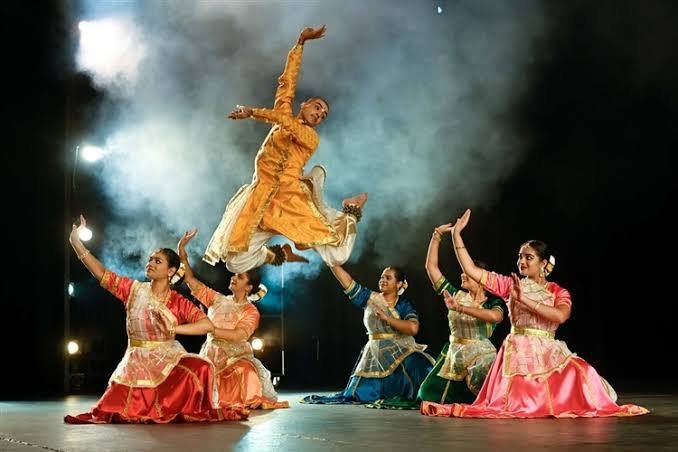
8. Bharatanatyam:
- Origin: Tamil Nadu, India
- Key Characteristics: One of the oldest classical dance forms of India, known for its intricate hand gestures (mudras), rhythmic footwork, and expressive facial expressions.
- Notable Features:
- Tells stories through dance, often depicting Hindu mythology and religious themes.
- Requires years of rigorous training and dedication.
- A significant part of Indian culture and heritage.
Bharatanatyam: A Journey Through Time and Emotion
Bharatanatyam, one of the most celebrated classical dance forms of India, is a captivating blend of art, culture, and spirituality. Originating in the temples of Tamil Nadu, this ancient dance form has evolved over centuries, captivating audiences with its grace, elegance, and profound storytelling.
A Tapestry of History:
The roots of Bharatanatyam can be traced back to the ancient Hindu text, the Natyashastra, authored by the sage Bharata Muni. This treatise, dating back to the 2nd century BCE, provides a comprehensive framework for Indian performing arts, encompassing dance, music, and drama.
Over the centuries, Bharatanatyam underwent various transformations, influenced by socio-cultural and religious factors. It was primarily performed by temple dancers known as devadasis, who dedicated their lives to the service of the divine.
In the 20th century, a revival movement led by pioneers like Rukmini Devi Arundale brought Bharatanatyam back into the mainstream. These visionaries strived to reclaim the art form’s artistic integrity, removing societal restrictions and elevating it to a respected classical dance form.
The Essence of Bharatanatyam:
Bharatanatyam is a highly codified dance form with a rich vocabulary of movements, gestures, and expressions. Key elements include:
- Nritta: Pure dance, focusing on intricate rhythmic patterns, footwork, and technical virtuosity.
- Nritya: Expressive dance, conveying emotions and narratives through gestures, facial expressions, and body movements.
- Natya: Dramatic dance, encompassing acting, mime, and storytelling.
Key Features:
- Mudras: The intricate hand gestures, or mudras, are a hallmark of Bharatanatyam. Each mudra has a symbolic meaning, conveying emotions, characters, and narratives.
- Abhinaya: This encompasses all aspects of expressive communication, including facial expressions, eye movements, and body language.
- Footwork: Complex and intricate footwork patterns, characterized by rapid rhythms and intricate steps.
- Costume and Jewelry: The traditional attire includes a vibrant silk saree, elaborate jewelry, and intricate makeup, adding to the visual splendor of the performance.
- Music: Bharatanatyam is accompanied by Carnatic music, featuring vocals, percussion (mridangam), and melodic instruments like the flute and violin.
The Modern Era:
Today, Bharatanatyam continues to evolve and thrive, with renowned dancers and choreographers pushing the boundaries of the art form. Contemporary interpretations of Bharatanatyam incorporate elements of modern dance, while still maintaining the core principles and aesthetic values of the tradition.
Conclusion:
Bharatanatyam is a testament to the enduring power of art and culture. This ancient dance form, with its rich history, intricate techniques, and profound spiritual significance, continues to captivate audiences worldwide. It serves as a powerful medium for self-expression, cultural preservation, and the transmission of artistic traditions across generations.

7. Breakdancing:
- Origin: The Bronx, New York City, 1970s
- Key Characteristics: A high-energy dance style characterized by acrobatic moves, spins, and power moves.
- Notable Features:
- Often associated with hip hop culture and breakbeat music.
- Features iconic moves like the headspin, windmill, and backspin.
- Highly athletic and physically demanding.
Breakdancing: A Deep Dive into the Art of Movement
Breakdancing, also known as b-boying/b-girling or breaking, is a high-energy street dance style that emerged in the Bronx, New York City, during the 1970s. It’s a cornerstone of hip-hop culture, alongside rapping, DJing, and graffiti art.
The Roots of Breakdancing:
Breakdancing’s origins lie within the vibrant social and cultural landscape of the Bronx during the 1970s.
- Influence of African-American and Latino Cultures: The dance form draws heavily from African-American and Latino dance traditions, incorporating elements of capoeira, martial arts, gymnastics, and acrobatics.
- DJ Kool Herc: This pioneering DJ played a crucial role in the development of breakdancing. He extended the “breaks” in songs – instrumental sections with a strong rhythmic beat – creating space for dancers to showcase their skills.
Key Elements of Breakdancing:
- Toprock: Upright dance moves, often featuring intricate footwork and rhythmic steps.
- Downrock: Performed on the ground, involving intricate hand and foot movements, such as six-step, turtle, and airtracks.
- Power Moves: Acrobatic moves that require strength, flexibility, and coordination, such as windmills, headspins, and flares.
- Freezes: Dynamic poses held momentarily, showcasing balance and control.
Breakdancing Culture:
Breakdancing is more than just a dance style; it’s a cultural phenomenon.
- Battles: Breakdancing competitions, often referred to as “battles,” are a central aspect of the culture. Dancers compete against each other, showcasing their skills and creativity.
- Community: The breakdancing community is a vibrant and supportive network of dancers, DJs, and enthusiasts who share a passion for the art form.
- Self-Expression: Breakdancing provides a powerful means of self-expression, allowing individuals to tell stories, convey emotions, and challenge themselves physically and creatively.
Breakdancing’s Global Impact:
Breakdancing has evolved from its Bronx origins to become a globally recognized and celebrated dance form.
- International Competitions: Major international competitions such as the Red Bull BC One and the Battle of the Year attract top-level b-boys and b-girls from around the world.
- Olympic Recognition: In 2020, breakdancing was officially recognized as an Olympic sport, making its debut at the 2024 Paris Olympics.
- Cultural Significance: Breakdancing has become a powerful symbol of youth culture, creativity, and self-expression, transcending cultural boundaries and inspiring dancers worldwide.
Conclusion:
Breakdancing is more than just a dance style; it’s a cultural movement that embodies the spirit of creativity, self-expression, and community. Its evolution from the streets of the Bronx to the global stage is a testament to its enduring power and influence. As breakdancing continues to evolve and inspire new generations of dancers, its legacy as a vibrant and dynamic art form will undoubtedly endure.
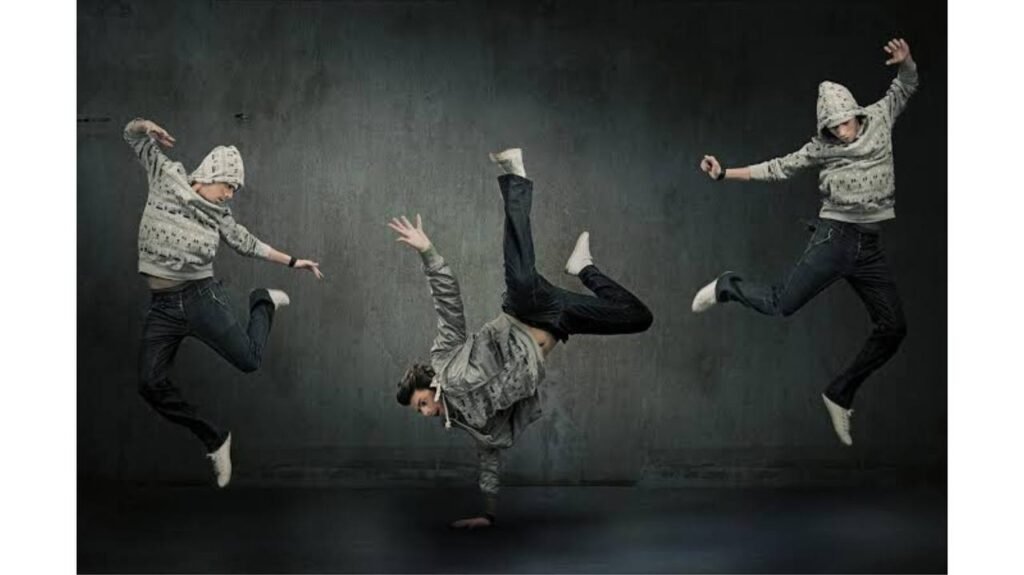
6. Contemporary Dance:
- Origin: Early 20th century
- Key Characteristics: A modern dance form that emphasizes artistic expression, emotional depth, and exploration of movement.
- Notable Features:
- Focuses on individual artistry and breaking free from traditional ballet techniques.
- Often incorporates elements of improvisation, yoga, and martial arts.
- Known for its fluidity, grace, and emotional intensity.
Contemporary Dance: A Deep Dive into Movement and Emotion
Contemporary dance is a dynamic and ever-evolving art form that emerged in the 20th century, breaking free from the rigid confines of classical ballet. It’s a captivating blend of movement, emotion, and artistic expression, drawing inspiration from various sources, including modern dance, ballet, jazz, and even martial arts.
Key Characteristics:
- Freedom of Movement: Unlike ballet, which emphasizes strict technique and prescribed movements, contemporary dance encourages freedom of expression and exploration. Dancers are encouraged to connect with their inner selves and express their unique voices through movement.
- Emphasis on Emotion: Contemporary dance is deeply rooted in emotional expression. Dancers strive to convey a wide range of emotions, from joy and sorrow to anger and fear, through their movements.
- Focus on the Body: The human body is central to contemporary dance. Dancers explore the full range of human movement, utilizing gravity, weight, and momentum to create dynamic and expressive forms.
- Interdisciplinary Influences: Contemporary dance draws inspiration from various disciplines, including yoga, martial arts, and even everyday movements. This interdisciplinary approach enriches the vocabulary of movement and allows for greater creativity and innovation.
- Innovation and Experimentation: Contemporary dance is constantly evolving, with choreographers pushing boundaries and experimenting with new techniques, technologies, and artistic concepts.
Key Pioneers and Influences:
- Isadora Duncan: Often considered the “mother of modern dance,” Duncan rejected the rigid constraints of classical ballet, emphasizing natural movement and emotional expression.
- Martha Graham: A pioneer of modern dance, Graham developed a technique that emphasized contraction and release, exploring the depths of human emotion through movement.
- Merce Cunningham: Known for his innovative choreography, Cunningham emphasized chance and improvisation, pushing the boundaries of dance and exploring new forms of artistic expression.
- Trisha Brown: A key figure in postmodern dance, Brown explored the concept of chance operations and developed a unique approach to choreography that challenged traditional notions of dance.
Contemporary Dance Today:
Today, contemporary dance continues to thrive, with a diverse range of styles and approaches emerging. From the lyrical and expressive movements of lyrical contemporary to the athletic and dynamic style of contemporary ballet, the genre continues to evolve and captivate audiences worldwide.
Key Features of Contemporary Dance:
- Floor Work: Contemporary dance often incorporates extensive floor work, utilizing the ground as a canvas for movement and expression.
- Improvisation: Improvisation plays a significant role in contemporary dance, allowing dancers to explore their creativity and respond to the moment.
- Minimalism: Some contemporary dance pieces emphasize minimalism, focusing on simple, yet profound movements that evoke deep emotional responses.
- Technology: Technology is increasingly being incorporated into contemporary dance, with the use of video projections, interactive elements, and virtual reality.
Conclusion:
Contemporary dance is a powerful and multifaceted art form that continues to push the boundaries of human expression. Its focus on individuality, emotion, and innovation makes it a captivating and ever-evolving art form that continues to inspire and challenge audiences worldwide.
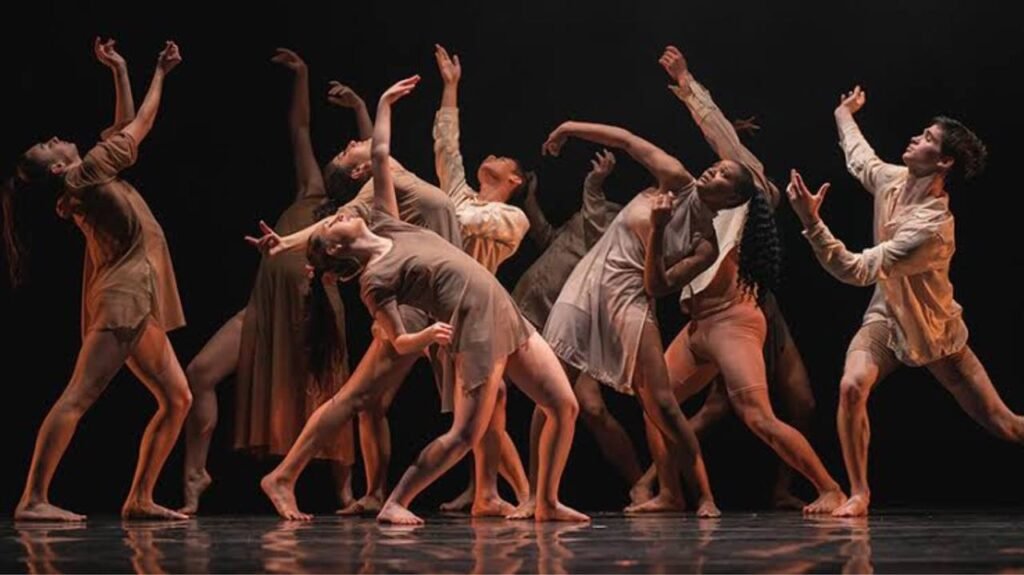
5. Ballroom:
- Origin: Europe, 16th century
- Key Characteristics: A collection of partner dances, including waltz, tango, foxtrot, and quickstep.
- Notable Features:
- Emphasizes grace, elegance, and formal presentation.
- Often performed competitively in ballroom dance competitions.
- Popular for social dancing and ballroom events.
Ballroom Dancing: A Timeless Art Form
Ballroom dancing, a captivating blend of grace, elegance, and athleticism, boasts a rich history that spans centuries. This sophisticated art form, characterized by intricate footwork, elegant posture, and harmonious partner interaction, has evolved from the courts of European royalty to the modern-day dance floor, captivating audiences worldwide.
A Glimpse into History:
The roots of ballroom dancing can be traced back to the Renaissance period in Europe. Court dances, often performed in grand ballrooms of nobility and aristocracy, were a prominent form of social entertainment. These early dances, characterized by elaborate costumes and formal etiquette, laid the foundation for the structured and stylized movements that define ballroom dancing today.
The 18th and 19th centuries witnessed significant developments in ballroom dancing. The waltz, with its revolutionary close partner hold, challenged traditional social norms and ushered in a new era of intimacy and freedom on the dance floor. Other dances, such as the minuet, polka, and foxtrot, gained popularity, each contributing to the evolving landscape of ballroom dance.
The Rise of Competitive Ballroom Dancing:
In the 20th century, ballroom dancing experienced a significant transformation with the emergence of competitive dance. The focus shifted towards precision, technique, and artistic expression. Dance competitions, with their intricate scoring systems and judging panels, provided a platform for dancers to showcase their skills and strive for excellence.
Key Ballroom Dance Styles:
- Waltz: A graceful and flowing dance characterized by its smooth gliding movements and Viennese Waltz, a faster and more energetic variation.
- Tango: A passionate and dramatic dance with strong Argentine roots, known for its sharp turns, dramatic pauses, and close partner embrace.
- Foxtrot: A smooth and elegant dance with a flowing rhythm and a gentle rise and fall.
- Quickstep: A fast-paced and energetic dance characterized by quick, light steps and intricate footwork.
- Viennese Waltz: A faster and more energetic version of the traditional waltz, characterized by its rapid turns and lively tempo.
- Samba: A lively Brazilian dance with a strong emphasis on rhythm and hip action.
- Rumba: A sensual and romantic dance with a strong Cuban influence.
- Cha-Cha-Cha: A lively and energetic dance with a distinctive three-step rhythm.
- Jive: A high-energy and upbeat dance with a strong swing influence.
The Benefits of Ballroom Dancing:
- Physical Fitness: Ballroom dancing provides a fantastic cardiovascular workout, improving flexibility, strength, and coordination.
- Mental and Emotional Well-being: It enhances cognitive function, reduces stress, and boosts self-esteem.
- Social Skills: Ballroom dancing fosters social interaction, communication, and teamwork, as it often involves partnering with others.
- Grace and Elegance: It cultivates grace, poise, and elegance, both on and off the dance floor.
- Self-Expression: Ballroom dancing allows individuals to express themselves artistically and connect with music on a deeper level.
Ballroom Dancing Today:
Today, ballroom dancing continues to thrive as a popular recreational activity and a competitive sport. Dance studios, competitions, and social dance events offer opportunities for people of all ages and skill levels to experience the joy and beauty of this timeless art form.
Conclusion:
Ballroom dancing, with its rich history, diverse styles, and numerous benefits, remains a captivating and enriching experience for people worldwide. Whether you’re seeking a challenging workout, a social outlet, or a means of artistic expression, ballroom dancing offers a unique and rewarding journey of movement, music, and human connection.
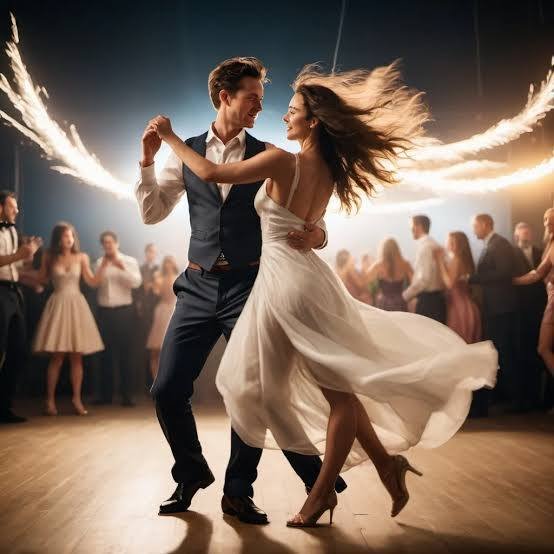
4. Salsa:
- Origin: Cuba
- Key Characteristics: A lively and passionate partner dance with Cuban roots.
- Notable Features:
- Characterized by fast-paced rhythms, intricate footwork, and close partner interaction.
- Often accompanied by Latin music, such as salsa, mambo, and timba.
- Popular in Latin America and throughout the world.
Salsa: A Spicy Blend of Rhythm and Passion
Salsa, more than just a dance, is a vibrant expression of Latin American culture, a captivating blend of music and movement that has captivated the world. This dynamic dance form, born from a rich tapestry of influences, pulsates with energy, passion, and an irresistible rhythm.
A Fusion of Rhythms and Cultures:
Salsa’s origins lie in the diverse musical and cultural landscape of the Caribbean, particularly Cuba and Puerto Rico. It emerged as a fusion of various Afro-Cuban and Latin rhythms, including:
- Son: A foundational Cuban genre characterized by its syncopated rhythms and call-and-response vocals.
- Rumba: A Cuban dance with strong African influences, known for its sensual movements and expressive gestures.
- Cha-cha-chá: Another Cuban dance characterized by its distinctive triple step.
- Mambo: A popular Cuban dance of the mid-20th century that significantly influenced the development of salsa.
These influences, along with contributions from other Caribbean rhythms and the vibrant musical scene of New York City in the mid-20th century, culminated in the emergence of salsa as a distinct genre.
Key Characteristics of Salsa:
- Rhythm: Salsa music is characterized by a strong, driving rhythm, typically in 4/4 time. The clave, a rhythmic pattern played on percussion instruments, provides the foundation for the music and dance.
- Movement: Salsa is a partner dance that emphasizes close partner work, intricate footwork, and expressive body movements.
- Basic Steps: The fundamental steps of salsa involve a series of steps and turns, often incorporating a “shine” or solo section for each partner.
- Turn Patterns: Salsa dancers execute a variety of turns and spins, adding complexity and flair to the dance.
- Musicality: The dance closely follows the rhythm and melody of the music, with dancers responding to the musical cues and improvising within the framework of the music.
- Social Interaction: Salsa is inherently social, fostering a sense of community among dancers. Social salsa events, such as “salas” or dance clubs, provide opportunities for dancers to connect, learn from each other, and enjoy the vibrant social atmosphere.
Styles of Salsa:
- Cuban Salsa: Characterized by strong Cuban roots, emphasizing intricate footwork and a more grounded, earthy feel.
- New York Style Salsa: Developed in the vibrant Latin music scene of New York City, known for its linear patterns and smooth, elegant movements.
- Los Angeles Style Salsa: Influenced by Hollywood and showmanship, this style incorporates more dramatic movements and theatrical flair.
- Puerto Rican Salsa: Emphasizes a more grounded and sensual style, with a focus on body movement and hip action.
Learning and Enjoying Salsa:
- Taking Classes: Group classes provide a structured learning environment and an opportunity to learn basic steps, improve technique, and practice with partners.
- Private Lessons: Private lessons offer personalized instruction and allow for faster progress.
- Social Dancing: Attending salsa socials and dance events provides opportunities to practice your skills, meet other dancers, and enjoy the social aspect of salsa.
The Impact of Salsa:
Salsa has transcended cultural boundaries, becoming a global phenomenon. It has not only provided a form of entertainment and exercise but also fostered a sense of community and cultural exchange. Salsa continues to evolve, with new styles and interpretations emerging constantly, ensuring that this vibrant dance form will continue to captivate audiences for generations to come.
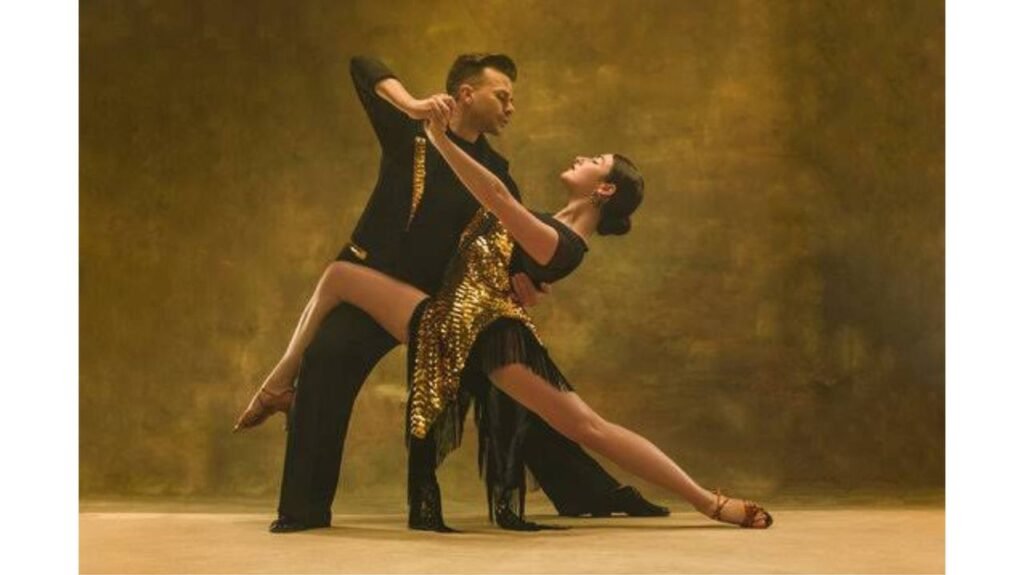
3. Jazz:
- Origin: United States, early 20th century
- Key Characteristics: A blend of African American dance traditions, European ballet, and other influences.
- Notable Features:
- Emphasizes improvisation, swing, and syncopation.
- Wide range of styles, including lyrical jazz, contemporary jazz, and modern jazz.
- Known for its energetic and expressive movements.
Jazz Dance: A Deep Dive into the Heartbeat of Movement
Jazz dance, a vibrant and dynamic art form, emerged in the early 20th century from the rich tapestry of African American culture. It’s a captivating blend of African dance traditions, European ballet, and other influences, resulting in a unique style that is both exhilarating and expressive.
A Fusion of Cultures:
The roots of jazz dance can be traced back to the forced migration of Africans to the Americas during the transatlantic slave trade. African dance forms, characterized by rhythmic movements, intricate footwork, and expressive gestures, were preserved and adapted in the New World.
These African dance traditions intermingled with European dance forms, particularly ballet, which was introduced during the colonial era. This cultural exchange gave rise to new movement styles, incorporating elements of European technique while retaining the spirit and energy of African dance.
Key Characteristics:
- Syncopation: Jazz dance is deeply rooted in syncopation, a rhythmic technique where the accent falls on an unexpected beat. This creates a dynamic and driving rhythm that is central to the style.
- Improvisation: Improvisation is a cornerstone of jazz dance, encouraging dancers to express themselves creatively and respond spontaneously to the music.
- Isolation: Jazz dancers excel at isolating different parts of the body, moving them independently while maintaining overall control and coordination.
- Swing: A key element of jazz dance, swing involves a relaxed and swinging motion of the hips and shoulders, adding a sense of fluidity and dynamism.
- Expressiveness: Jazz dance is highly expressive, conveying emotions and stories through movement. Dancers use their bodies to communicate joy, sorrow, anger, and a wide range of other human experiences.
Evolution of Jazz Dance:
- Early 20th Century: The early years of jazz dance saw the emergence of influential figures like Josephine Baker and Bill “Bojangles” Robinson, who captivated audiences with their unique styles and innovative choreography.
- The Swing Era: The 1920s and 1930s witnessed the rise of swing music, which fueled the popularity of jazz dance. The Charleston, a lively and energetic dance characterized by fast footwork and swinging movements, became a cultural phenomenon.
- Modern Jazz: In the mid-20th century, choreographers like Martha Graham and Lester Horton began to integrate modern dance principles into jazz, creating new and innovative forms.
- Contemporary Jazz: Contemporary jazz emerged in the late 20th century, blending elements of modern dance, ballet, and other influences. It emphasizes artistry, emotional expression, and individual creativity.
Impact and Influence:
Jazz dance has had a profound impact on the world of dance, influencing countless other styles, including hip hop, contemporary dance, and musical theater. Its influence extends beyond the dance world, permeating popular culture and inspiring artists in various fields.
Conclusion:
Jazz dance is a vibrant and dynamic art form that continues to evolve and inspire. Its rich history, diverse influences, and emphasis on creativity and self-expression make it a captivating and rewarding form of artistic expression. Whether you’re a seasoned dancer or simply appreciate the beauty of movement, exploring the world of jazz dance offers a unique and enriching experience.
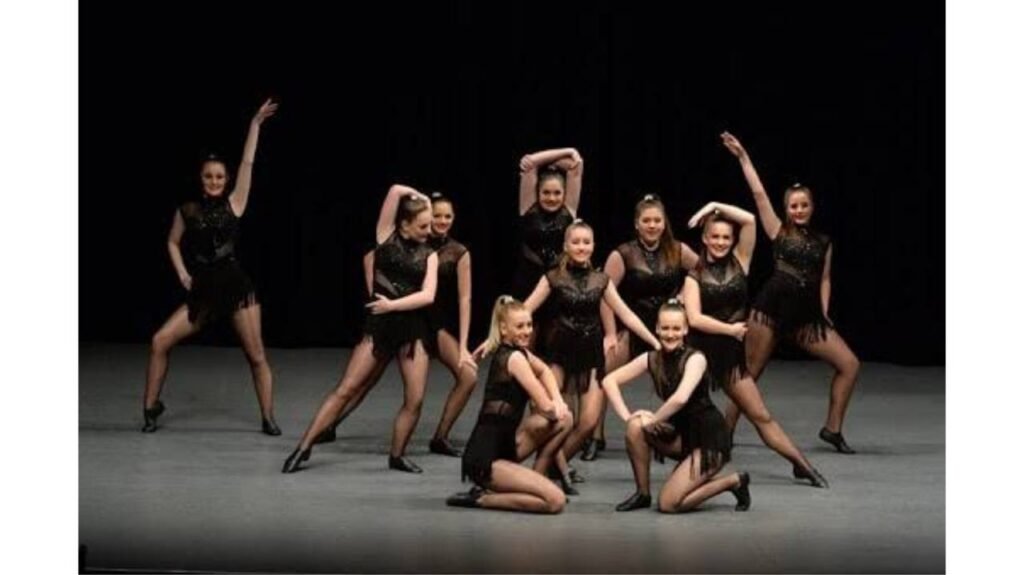
2. Hip Hop:
- Origin: The Bronx, New York City, 1970s
- Key Characteristics: Energetic and dynamic movements, often incorporating elements of breaking, popping, locking, and freestyle.
- Notable Features:
- Strong emphasis on rhythm, improvisation, and self-expression.
- Often reflects social and cultural issues.
- Continuously evolving with new styles and trends.
- Influential Figures: Michael Jackson, Madonna, Beyoncé
Hip Hop Dance: A Deep Dive into the Streets and Beyond
Hip hop dance, a vibrant and dynamic art form, emerged from the streets of the Bronx, New York City, in the 1970s. Rooted in the African American experience, it has evolved into a global phenomenon, captivating audiences with its energy, creativity, and cultural significance.
Origins and Evolution:
Hip hop dance is an integral part of hip hop culture, a multifaceted movement encompassing music, art, fashion, and language. Its origins can be traced back to the social and cultural climate of the Bronx in the 1970s.
- Early Influences:
- Breakdancing: One of the earliest and most recognizable forms of hip hop dance, breaking involves intricate footwork, spins, and acrobatic moves performed on the ground.
- Locking: Developed by The Lockers, this style features sharp, angular movements and sudden freezes, often accompanied by playful expressions.
- Popping: Created by The Electric Boogaloos, popping involves quick, jerky movements of the muscles, creating an illusion of the body “popping” in and out of place.
These early styles evolved in response to the evolving sounds of hip hop music, drawing inspiration from funk, soul, and jazz.
Key Characteristics:
- Rhythm and Groove: Hip hop dance emphasizes strong rhythmic sensibility and a deep connection to the music. Dancers interpret the beat in unique and creative ways, allowing the music to guide their movements.
- Improvisation: Improvisation is a cornerstone of hip hop dance, encouraging spontaneity, creativity, and self-expression. Dancers often engage in battles, where they showcase their skills and creativity through improvised routines.
- Cultural Significance: Hip hop dance reflects the social, cultural, and political realities of its time. It serves as a powerful form of self-expression, allowing dancers to share their stories, experiences, and perspectives.
- Continuous Evolution: Hip hop dance is a constantly evolving art form, with new styles and techniques emerging continuously. Contemporary hip hop incorporates elements of various dance styles, including ballet, jazz, and modern dance.
Impact and Influence:
- Global Phenomenon: Hip hop dance has transcended its urban origins to become a global phenomenon, influencing dance styles worldwide.
- Mainstream Influence: Hip hop dance has significantly impacted popular culture, influencing music videos, movies, and television shows.
- Social and Cultural Impact: Hip hop dance has played a crucial role in social and cultural change, providing a platform for self-expression, empowerment, and social commentary.
Conclusion:
Hip hop dance is more than just a form of entertainment; it’s a powerful art form that reflects the spirit of its time, celebrates individuality, and fosters creativity. From its humble beginnings in the streets of the Bronx, hip hop dance has evolved into a global phenomenon, captivating audiences with its energy, innovation, and cultural significance.
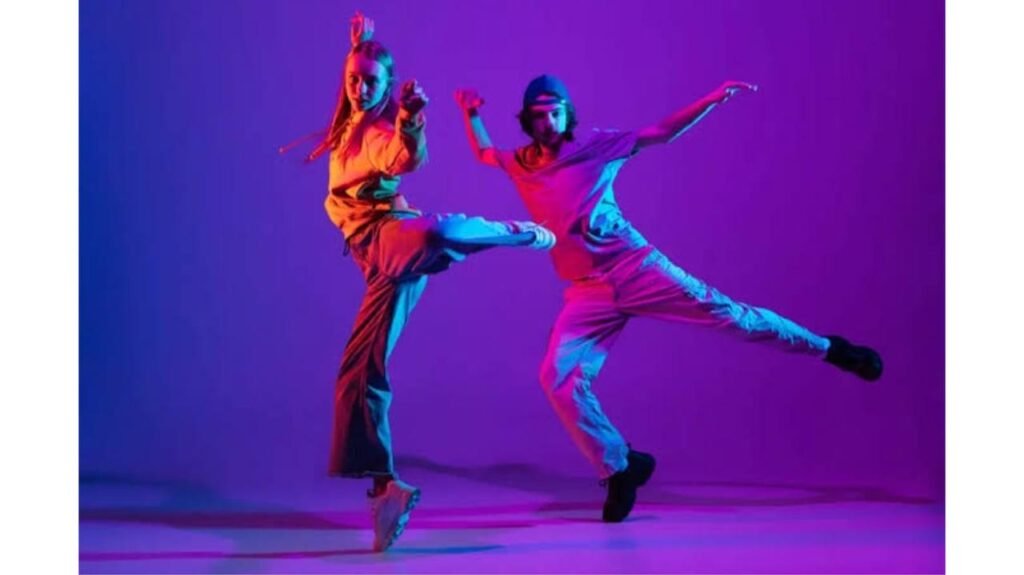
1. Ballet:
- Origin: Italy, 15th century
- Key Characteristics: Graceful and elegant movements, emphasizing pointe work (dancing on the tips of the toes), precise technique, and classical music.
- Notable Features:
- Characterized by fluid, controlled movements, expressive gestures, and elaborate costumes.
- Focuses on developing strength, flexibility, and coordination.
- Includes various forms like classical ballet, neoclassical ballet, and contemporary ballet.
- Famous Ballets: Swan Lake, The Nutcracker, Sleeping Beauty
Ballet: A Journey Through Grace and Elegance
Ballet, a cornerstone of Western dance, is a highly stylized and formalized dance form that originated in the Italian Renaissance courts of the 15th century. Characterized by precise and fluid movements, ballet incorporates specific techniques and positions that convey a narrative or evoke emotions
A Glimpse into the History of Ballet:
- Early Origins: The roots of ballet can be traced back to courtly dances of the Renaissance, which evolved into a more formalized and theatrical art form.
- French Influence: Ballet flourished in France during the 17th and 18th centuries, with King Louis XIV, a passionate ballet enthusiast, playing a crucial role in its development. The establishment of the Académie Royale de Danse in 1661 marked a significant milestone, codifying ballet technique and paving the way for its future evolution.
- The Romantic Era: The 19th century witnessed a significant shift in ballet, with a focus on ethereal and romantic themes. Ballerinas began dancing en pointe (on the tips of their toes), creating an illusion of weightlessness and ethereal beauty.
- The 20th Century: The 20th century saw the emergence of new ballet styles, including neoclassical ballet, which sought to modernize classical ballet while retaining its core principles.
Key Characteristics of Ballet:
- Precise Technique: Ballet technique emphasizes precision, control, and alignment. Dancers undergo rigorous training to master fundamental positions, steps, and movements.
- Turnout: A crucial aspect of ballet technique, turnout refers to the outward rotation of the legs from the hips.
- Pointe Work: Female dancers often perform en pointe, dancing on the tips of their toes using specially designed pointe shoes.
- Grace and Elegance: Ballet movements are characterized by grace, fluidity, and a sense of effortless ease.
- Musicality: Ballet is deeply intertwined with music, with dancers expressing the nuances of the music through their movements.
Fundamental Ballet Movements:
- Plié: A bending of the knees.
- Relevé: Rising to the balls of the feet.
- Tendu: Extending the leg to the front, side, or back.
- Dégagé: A small extension of the leg.
- Pirouette: A turn on one foot.
- Arabesque: A pose in which one leg is extended behind the body while the dancer balances on the other leg.
Types of Ballet:
- Classical Ballet: Adheres to the traditional techniques and aesthetics of classical ballet, often featuring stories and fairy tales.
- Neoclassical Ballet: Modernizes classical ballet, exploring new movement vocabulary and incorporating contemporary influences.
- Contemporary Ballet: Blends classical ballet with modern dance, emphasizing emotional expression and artistic exploration.
The Importance of Ballet:
- Physical and Mental Benefits: Ballet training enhances physical fitness, flexibility, strength, and coordination. It also cultivates discipline, focus, and self-discipline.
- Artistic Expression: Ballet provides a powerful means of artistic expression, allowing dancers to convey emotions, tell stories, and connect with audiences.
- Cultural Significance: Ballet has played a significant role in Western culture, influencing art, music, and fashion.
Conclusion:
Ballet is a timeless art form that continues to captivate audiences worldwide. Its elegance, precision, and expressive power make it a unique and enduring form of artistic expression.

Conclusion:
This list provides a glimpse into the diverse and captivating world of dance. Each style offers unique challenges, rewards, and opportunities for artistic expression. Whether you’re drawn to the grace of ballet, the energy of hip hop, or the cultural richness of classical Indian dances, exploring the world of dance can be a rewarding and enriching experience.
FAQs
1. What are the most famous dance styles in the world?
Some of the most famous dance styles globally include:
Ballet: A classical dance form known for its grace and precision.
Hip-hop: A street dance style that evolved from urban culture, featuring energetic moves.
Salsa: A lively Latin dance with rhythmic footwork and body movements.
Tango: An expressive and dramatic partner dance originating in Argentina.
Waltz: A smooth, rotating ballroom dance with flowing movements.
These dances are celebrated for their unique rhythms and cultural significance
2. Which dance is considered the hardest to learn?
The difficulty of learning a dance depends on the individual’s skills and experience, but some of the hardest dances to master include:
Ballet: Requires strong technique, flexibility, and years of training.
Tango: The precise footwork and connection between partners make it challenging.
Salsa: Demands fast footwork, timing, and coordination.
Breakdancing: Involves acrobatic moves, strength, and stamina.
These dances require significant practice and dedication to perform at a high level.
3. What dance originated in the United States?
Several popular dances originated in the United States, including:
Hip-hop: Born in the Bronx, New York, during the 1970s as part of the urban culture.
Swing Dance: Originated in the 1920s and 1930s, influenced by jazz music.
Line Dancing: Became popular in the country and western dance scene.
These dances have become global phenomena, influencing contemporary dance culture.
4. What are the benefits of learning famous dances?
Learning famous dances offers numerous benefits:
Physical fitness: Many dances provide a great workout, improving strength, flexibility, and endurance.
Cultural appreciation: Dances reflect the traditions and values of different cultures.
Social connection: Partner dances like salsa or tango encourage communication and cooperation.
Mental stimulation: Learning complex routines enhances memory and coordination.
Dancing is a fun and effective way to stay active while connecting with others and exploring different cultures.
5. Can anyone learn famous dances, or do you need special skills?
Anyone can learn famous dances, regardless of skill level. Many dance forms, such as salsa, waltz, or hip-hop, can be learned through:
Online tutorials and classes: Offering step-by-step guidance.
Dance studios: Where instructors teach beginner to advanced levels.
Practice: Consistent practice is key to mastering any dance form.
While some dances, like ballet, may require more technical skills, most styles are accessible to learners of all ages and backgrounds.
